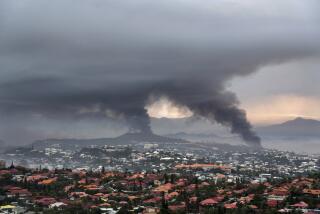Khmer Will Have to Be Watched : And maybe the French will too, as Cambodia searches for peace
- Share via
The so-called new era in Cambodia is already off to a rocky start.
For one thing, France, which made Cambodia a protectorate in 1863 and granted it independence only in 1953, at the moment seems most concerned with trying to reassert a dominant French cultural presence. France first insisted on having a French general lead the U.N. forces, eventually to number 2,000 U.N. peacekeepers, and then demanded that French be the official language of the contingent. Rejected on both points, France was able to get a highly respected American doctor replaced by a Frenchman as head of the important World Health Organization office in Phnom Penh. Some Western diplomats in Cambodia bluntly say all this is an effort to establish a new cultural colonialism.
And for another, under an agreement brokered by the United States, China and the Soviet Union, representatives of the Phnom Penh government and three mutually hostile guerrilla forces are to cooperate in an interim Supreme National Council, which is to rule the country for about the next 18 months while preparations are made for democratic elections. At the head of the council will be one of this century’s great political survivors, Prince Norodom Sihanouk, first put on the throne as a figurehead by Cambodia’s French colonial rulers 50 years ago and today still widely regarded at home and abroad as the only Cambodian with any hope of uniting the divided country.
That hope rests on something less than a rock-solid foundation. Aided by the planned U.N. peacekeeping force, the interim government is supposed to oversee the staggering task of disarming about 150,000 well-armed guerrillas. Concerns are being raised at the outset that the infamous Khmer Rouge communists have hidden huge arms caches and are concealing troops in the jungles in preparation for another grab for power a few years hence. After seizing power in 1975, the Khmer Rouge conducted a genocidal reign of terror that killed an estimated 1 million Cambodians, among them a dozen of Sihanouk’s own children and grandchildren.
Cambodia’s history is full of pain and outside interference; it must not be repeated.
More to Read
Sign up for Essential California
The most important California stories and recommendations in your inbox every morning.
You may occasionally receive promotional content from the Los Angeles Times.













